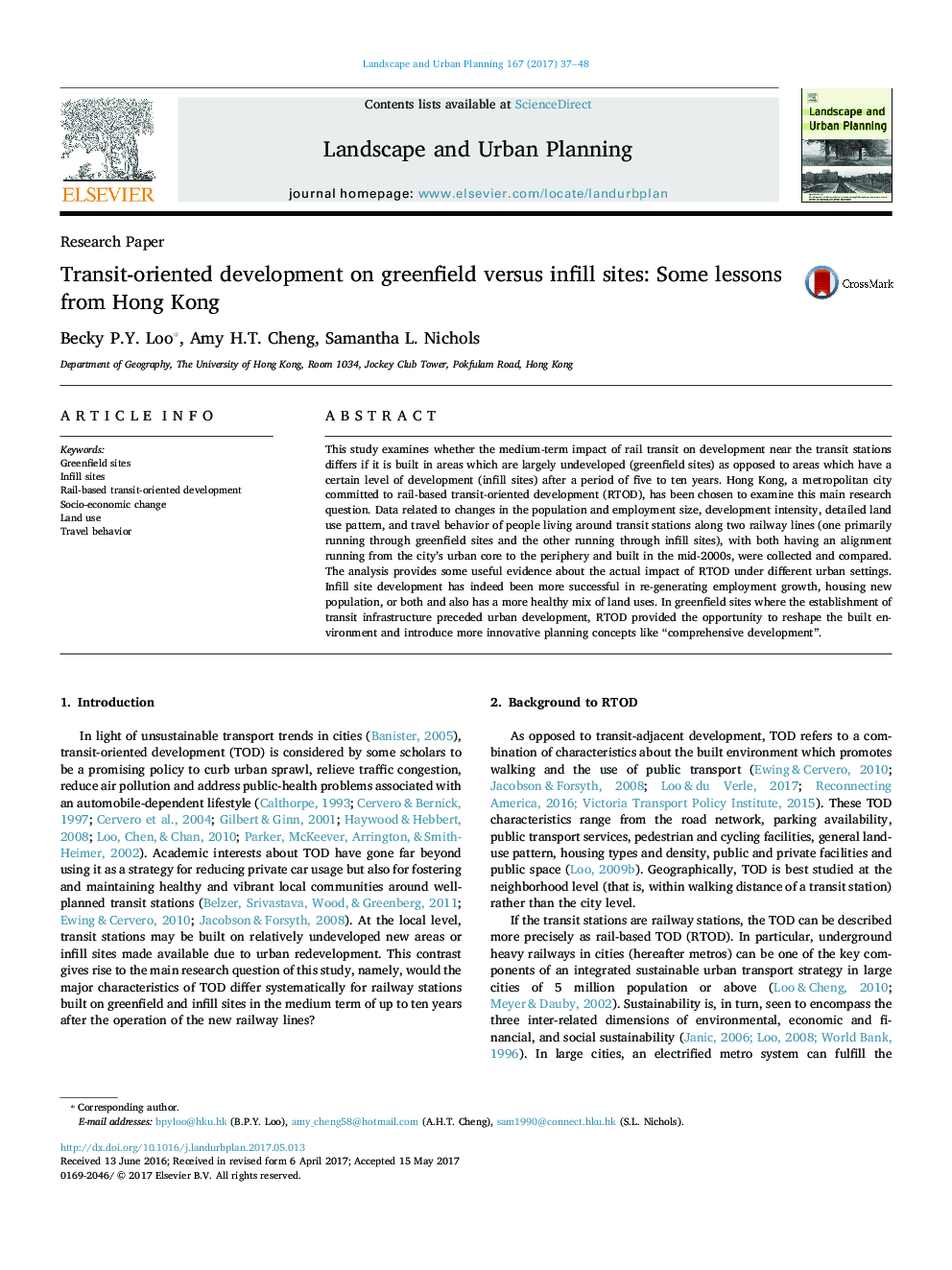| Article ID | Journal | Published Year | Pages | File Type |
|---|---|---|---|---|
| 5114936 | Landscape and Urban Planning | 2017 | 12 Pages |
Abstract
This study examines whether the medium-term impact of rail transit on development near the transit stations differs if it is built in areas which are largely undeveloped (greenfield sites) as opposed to areas which have a certain level of development (infill sites) after a period of five to ten years. Hong Kong, a metropolitan city committed to rail-based transit-oriented development (RTOD), has been chosen to examine this main research question. Data related to changes in the population and employment size, development intensity, detailed land use pattern, and travel behavior of people living around transit stations along two railway lines (one primarily running through greenfield sites and the other running through infill sites), with both having an alignment running from the city's urban core to the periphery and built in the mid-2000s, were collected and compared. The analysis provides some useful evidence about the actual impact of RTOD under different urban settings. Infill site development has indeed been more successful in re-generating employment growth, housing new population, or both and also has a more healthy mix of land uses. In greenfield sites where the establishment of transit infrastructure preceded urban development, RTOD provided the opportunity to reshape the built environment and introduce more innovative planning concepts like “comprehensive development”.
Related Topics
Life Sciences
Agricultural and Biological Sciences
Ecology, Evolution, Behavior and Systematics
Authors
Becky P.Y. Loo, Amy H.T. Cheng, Samantha L. Nichols,
